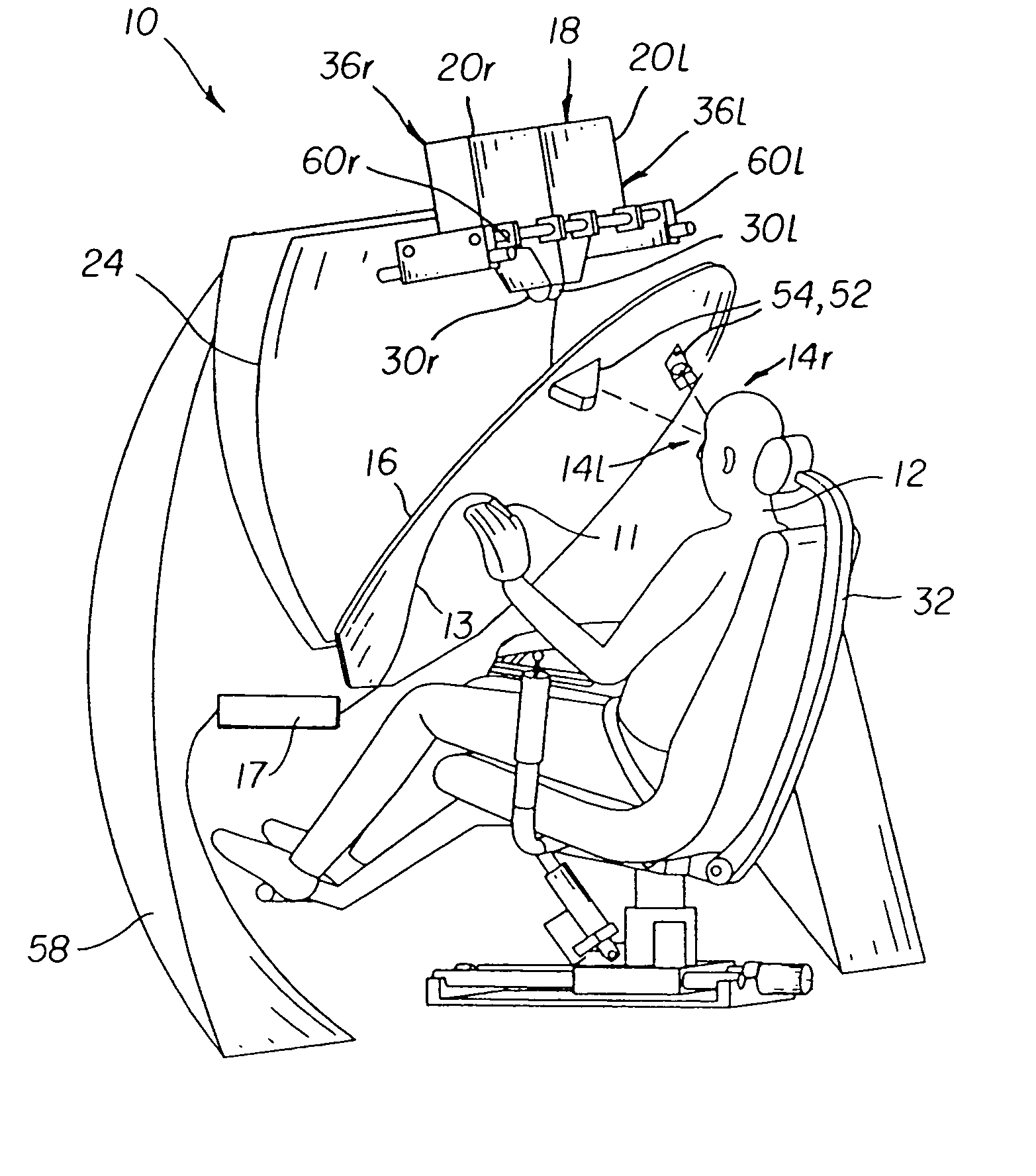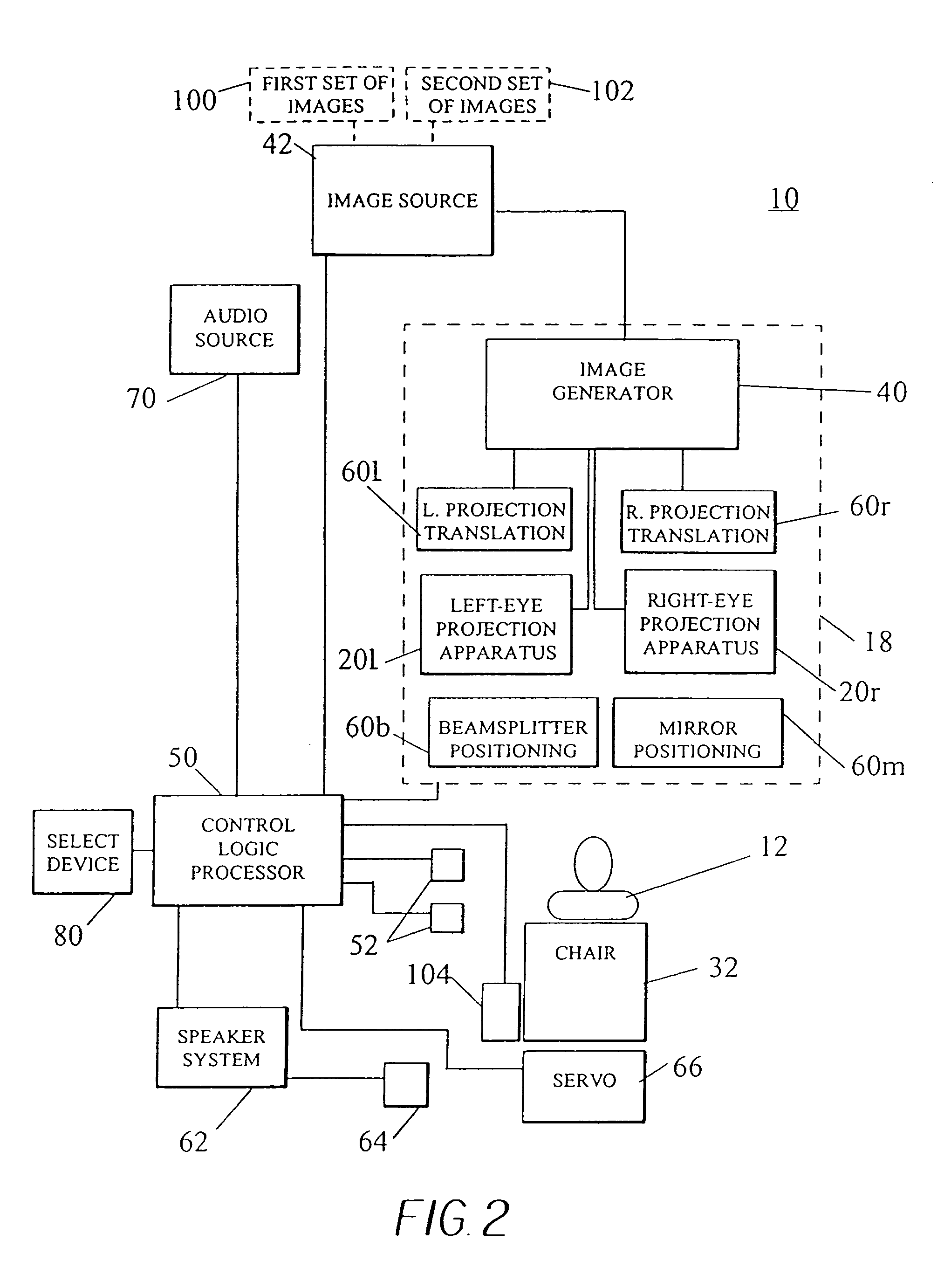System and method for conditioning the psychological state of a subject using an adaptive autostereoscopic display
a technology of autostereoscopic display and subject, applied in the field of psychosocial health management, can solve the problems of subject's inability to inability to practice and apply visualization techniques without assistance, and inability to create and properly control mental images, so as to reduce stress levels and minimize the distraction of external equipment, movement or personnel
- Summary
- Abstract
- Description
- Claims
- Application Information
AI Technical Summary
Benefits of technology
Problems solved by technology
Method used
Image
Examples
Embodiment Construction
[0042] The present description is directed in particular to elements forming part of, or cooperating more directly with, apparatus in accordance with the invention. It is to be understood that elements not specifically shown or described may take various forms well known to those skilled in the art.
[0043] Referring to FIG. 1, there is shown an adaptive autostereoscopic display system 10, arranged as a biofeedback imaging apparatus. Adaptive autostereoscopic display system 10 can be used to monitor, condition, and manage the psychological and physiological state of a subject 12, either controlled by another person, such as a medical professional, or programmed for control by subject 12. Although the present invention will be primarily described as using images for behavior modification such as stress management, it is recognized that other sensory stimuli such as sound, smell, touch, for example, can be provided to subject 12 within the context of the present invention. Within this ...
PUM
 Login to View More
Login to View More Abstract
Description
Claims
Application Information
 Login to View More
Login to View More - R&D
- Intellectual Property
- Life Sciences
- Materials
- Tech Scout
- Unparalleled Data Quality
- Higher Quality Content
- 60% Fewer Hallucinations
Browse by: Latest US Patents, China's latest patents, Technical Efficacy Thesaurus, Application Domain, Technology Topic, Popular Technical Reports.
© 2025 PatSnap. All rights reserved.Legal|Privacy policy|Modern Slavery Act Transparency Statement|Sitemap|About US| Contact US: help@patsnap.com



